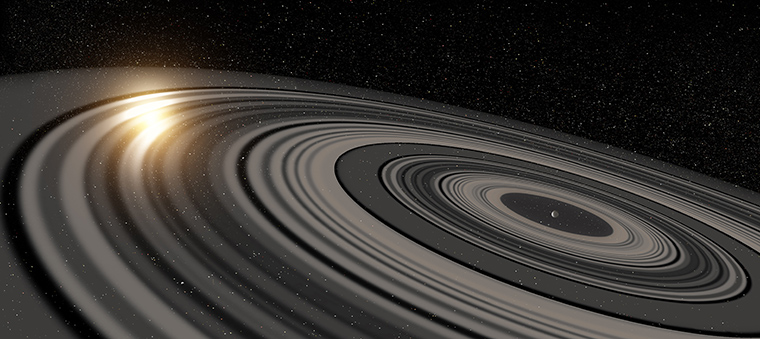
The emblematic rings of the gigantic gaseous planet Saturn, as well as those less known of the gigantic Neptune and Uranus are made of pieces of raw material derived from all the planets like Pluto that remained for too long in the vicinity of these planets, being destroyed by the strong gravitational attraction developed by them, according to a new study. Astronomers believe that thousands of small planets were in the Kuiper Belt – the ring of frozen objects beyond Neptune’s orbit – shortly after the formation of the solar system. Things began to change almost 4 billion years after the big planets of the solar system, Jupiter, Saturn, Uranus and Neptune modified their orbit, stirring up chaos among the objects in the Kuiper belt and in the ones from the asteroid belt between Mars and Jupiter.
The result was the projection of many objects from these two areas toward the inside of the solar system and the beginning of an age of frequent impacts between the cosmic objects around the sun, an era called the Heavy Bombardment. According to the study, more small planets like Pluto passed too close to Saturn, Uranus and Neptune being simply destroyed by the huge gravitational attraction of these planets. In accordance with the computerized simulations made by the team of experts, in some cases, up to 10% of the mass of the small destroyed planets remained on the orbit of the giant planet which destroyed them.
These pieces came across each other over the billions of years, resulting the rings of ice particles and dust that may be observed in the present around Saturn, Uranus and Neptune. The rings of Saturn are 95% made of iced water, while the rings of Uranus, Neptune have a darker color and seem to be composed mostly of rock particles.